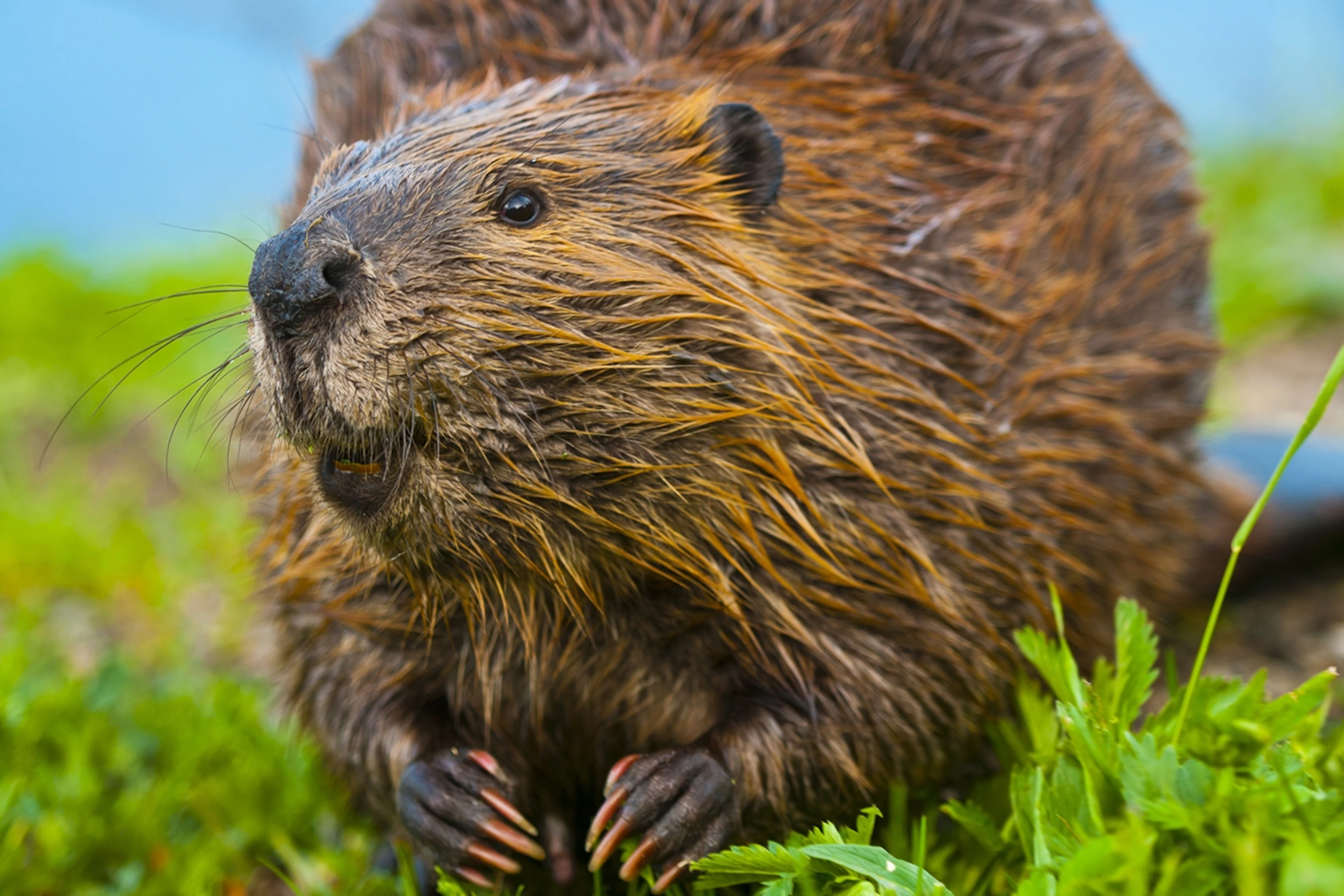
Yes, they are mammals and, after the South American capybara, beavers are the largest of all rodents. They live in water and use their sharp teeth to gnaw through the bases of trees, felling them to dam streams. In the ponds created by the dams they then build their homes, which are called lodges.
Beavers are mammals and have several mammalian traits. Beavers are vertebrates; they have mammary glands that they use to feed their live young, have a four-chambered heart, have fur, and have sweat glands to cool down.
Is A Beaver A Vertebrate?
One of the characteristics that all mammals have is that they have a backbone inside their body. However, it is not just mammals that have a backbone.
Other animals such as fish, amphibians, reptiles, and birds also have a backbone. Animals with a backbone are called vertebrates.
There is another group of animals called invertebrates. These are animals that don’t have a backbone inside their body. Examples include single-celled organisms, earthworms, starfish, octopus, snails, clams, insects, and spiders.
Beavers are classed as vertebrates with a backbone inside their bodies. The spinal cord is surrounded by cartilage or bone.
Beavers produce milk within their mammary glands. Beavers have four nipples, only visible when the female is lactating. This is one of the only ways to tell the difference between male and female beavers.
Beavers usually give birth to between one and six kits. Beavers are fully weaned off milk from their mother at about six weeks. The milk contains essential nutrients for beavers in the early stages of growing healthy.
Does A Beaver Have A Four-Chambered Heart?
Mammals all share another characteristic, one which is also shared with birds. Both birds and mammals have a heart that contains four chambers. Surprisingly, crocodiles, a reptile, also have a four-chambered heart.
The four-chambered heart is essential for the respiratory system of mammals. When mammals breathe in air, they take in oxygen. Oxygen is needed to survive, but the waste product is carbon dioxide once the oxygen has performed its function. Carbon dioxide is expelled back into the air when we breathe out.
Do Beavers Have Hair?
Another characteristic of a mammal is that they have hair or fur. The fur is generally used when a mammal has very thick body hair. Humans have hair, but we wouldn’t call it fur, whereas other mammals covered, such as bears or raccoons, would have fur.
Hair or fur consists of two layers. These consist of a thicker underfur covered with oily guard hairs on top.
The guard hairs are longer and coarser. They repel water from the skin and block the sun’s ultraviolet rays. In animals with markings, such as a jaguar, these markings are on the guard hair layer.
The thick underfur, or down fur, is used to keep the animal warm and is made up of curly or wavy hairs.
Even whales and dolphins have hair, although some species only have hair follicles. Species such as the humpback whale have hair their entire life, with a single hair coming out of each hair follicle. Toothed whales usually lose their hair shortly after birth.
Do Beavers Have Sweat Glands?
Mammals need to regulate their temperatures, and although all mammals sweat, not all cool down the same way.
For us, sweating is a way of regulating our body temperature, so we don’t overheat. The sweat glands produce sweat, which evaporation carries away from the body. This carries away the heat and makes us feel cooler.
Humans aren’t the only mammals that sweat through their skin. Primates and horses also sweat through sweat glands.
Do Beavers Have Three Middle Ear Bones?
Another trait that mammals possess is three bones in the middle ear. These three small bones are called ossicles and conduct vibrations (sound) to the eardrum’s inner ear.
The three bones are called the malleus (hammer), the incus (anvil), and the stapes (stirrup).
Once the vibrations are in the inner ear, the vibrations are converted into nerve impulses. These three bones play a vital role in a mammal’s hearing ability.
Credit : North American nature
Picture Credit : Google

